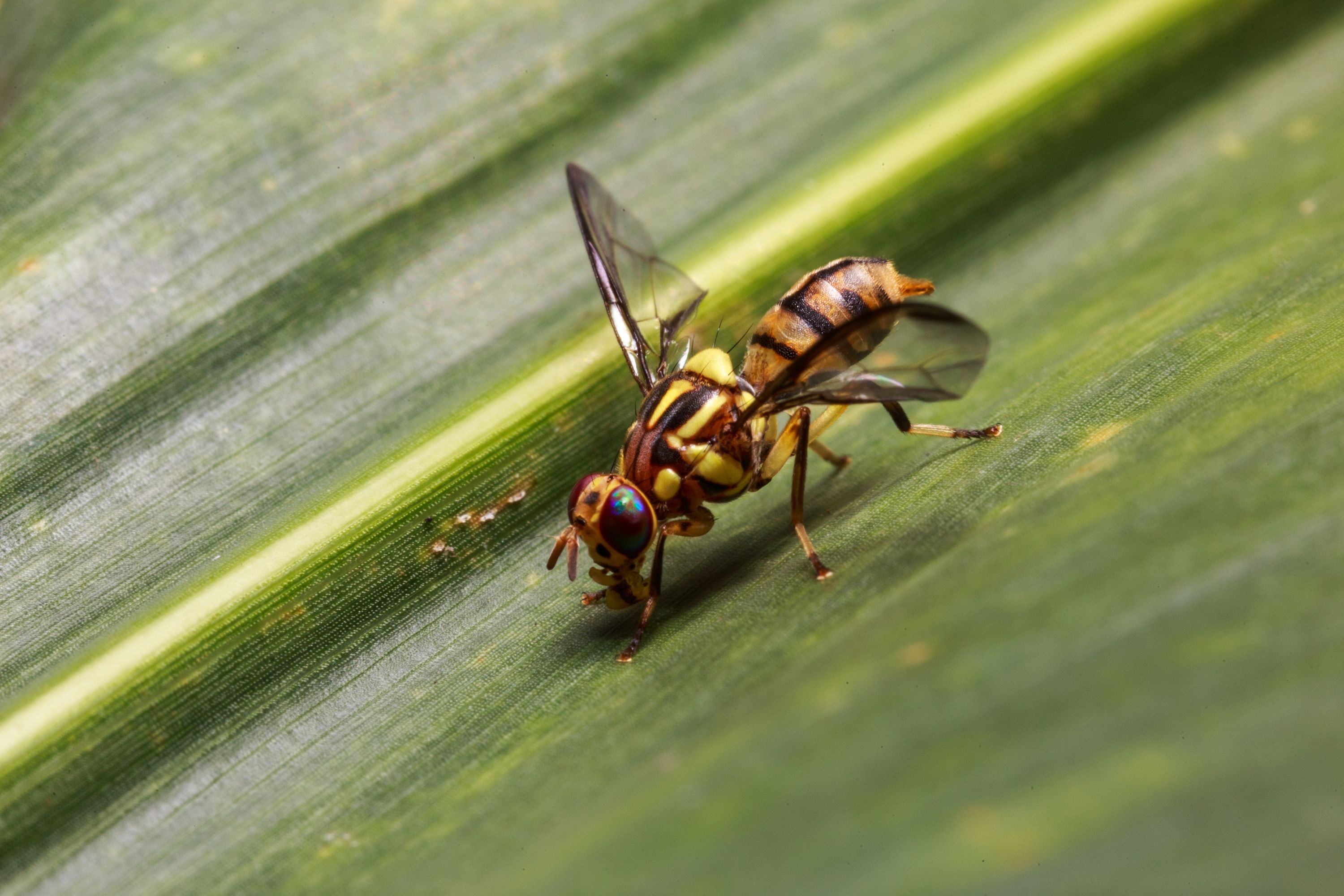Melon fly
(Bactrocera cucurbitae)

Description
Bactrocera cucurbitae, the melon fly, is a fruit fly of the family Tephritidae. It is a serious agricultural pest, particularly in Hawaii. The adult melon fly is 6 to 8 mm in length. Distinctive characteristics include its wing pattern, its long third antennal segment, the reddish yellow dorsum of the thorax with light yellow markings, and the yellowish head with black spots. The egg is elliptical, about 2 mm long, and pure white. It is almost flat on the ventral surface, and more convex on the dorsal. Eggs are often somewhat longitudinally curved. The larva is a cylindrical-maggot shape, elongated, with the anterior end narrowed a somewhat curved ventrally. It has anterior mouth hooks, ventral fusiform areas and a flattened caudal end. Last instar larvae range from 7.5 to 11.8 mm in length. The venter has fusiform areas on segments 2 through 11. The anterior buccal carinae are usually 18 to 20 in number. The anterior spiracles are slightly convex in lateral view, with relatively small tubules averaging 18 to 20 in number. The puparium ranges in color from dull red or brownish yellow to dull white, and is about 5 to 6 mm in length. Development period from egg to adult ranges from 12 to 28 days. The female may lay as many as 1,000 eggs. Eggs are generally laid in young fruit 2-4mm deep, but are also laid in the succulent stems of host plants. The eggs are deposited in cavities created by the female using its sharp ovipositor. Pupation usually occurs in the soil. There may be as many as 8 to 10 generations a year. Melon flies are most often found on low, leafy, succulent vegetation near cultivated areas. In hot weather they rest on the undersides of leaves and in shady areas. They are strong fliers and usually fly in the mornings and afternoons. They feed on the juices of decaying fruit, nectar, bird feces, and plant sap. The melon fly is native to India, and is distributed throughout most parts of the country. It can be found throughout most of southern Asia, several countries in Africa, some island groups in the Pacific. In the United States, it was the first tephritid fruit fly species established in Hawaii. It was introduced there from Japan around 1895, and by 1897, when it was first observed, it had already become a serious pest. Not yet established in the continental United States, it is often intercepted at ports. Occasionally, an infestation is established, but is then eradicated.
Taxonomic tree:







